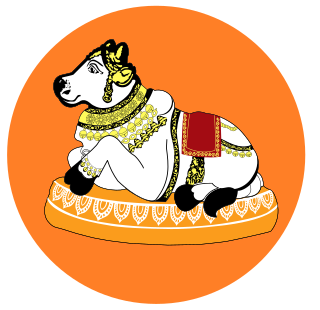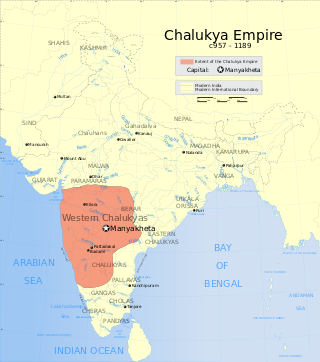
Lingayatism is a monotheistic religious sect of Shaivism within Hindu denomination. Lingayats are also known as liṅgāyataru, liṅgavanta, vīraśaiva, liṅgadhāri. Lingayatism is known for its unique practice of Ishtalinga worship, where adherents carry a personal linga symbolizing a constant, intimate relationship with Parashiva. A radical feature of Lingayatism is its staunch opposition to the caste system and advocacy for social equality, challenging societal norms of the time. Its philosophical tenets are encapsulated in Vachanas, a form of devotional poetry. The tradition also emphasizes Kayaka (work) and Dasoha (service) as forms of worship, underscoring the sanctity of labor and service to others. Unlike mainstream Hinduism, Lingayatism rejects scriptural authority of vedas, puranas, superstition, astrology, vedic priesthood ritualistic practices, and the concept of rebirth, promoting a direct, personal experience of the divine.

Basava (1131–1167), also called Basavēśvara and Basavaṇṇa, was an Indian philosopher, poet, Lingayat social reformer in the Shiva-focused bhakti movement, and a Hindu Shaivite social reformer during the reign of the Kalyani Chalukya/Kalachuri dynasty. Basava was active during the rule of both dynasties but reached the peak of his influence during the rule of King Bijjala II in Karnataka, India.

Akka Mahadevi was an early poet of Kannada literature and a prominent member of the Lingayatism founded in the 12th century. Her 430 vachanas, and the two short writings called Mantrogopya and the Yogangatrividh are considered her known contributions to Kannada literature. The term Akka was an honorific given to her by saints such as Basavanna, Siddharama, and Allamaprabhu as an indication of her high place in the spiritual discussions held at the "Anubhava Mantapa". She is regarded to be a major female figure in Kannada literature and in the history of Karnataka. She considered the god Shiva as her husband.

The Jangam or Jangamaru are a Shaiva order of religious monks. They are the priests (Gurus) of the Hindu Shaiva sect, Gurus of Veerashaiva sect and are disciples of Shiva as mentioned in Basava Puranas. The meaning of word Jangam is 'moving linga'. Jangama is one who is endowed with true spirit of Agamic knowledge, and has sacrificed his life for giving Samskara (good) character building practices in all sections of the Hindu society.

Basavakalyana is a historical city and municipal council in the Bidar District of the Indian state of Karnataka. It was the capital of two dynasties—Kalyani Chalukya and Kalachuris of Kalyani. It is famous for the world's tallest Basavanna statue, which stands 108 feet high. It is one of the major cities and industrial hubs of Bidar district.

Allamaprabhu was a 12th-century mystic-saint and Vachana poet of the Kannada language, propagating the unitary consciousness of Self and Shiva. Allamaprabhu is one of the celebrated poets and the patron saint of the Lingayata movement that reshaped medieval Karnataka society and popular Kannada literature. He is included among the "Trinity of Lingayathism", along with Basavanna, the founder of the movement, and Akka Mahadevi, the most prominent woman poet.

Kudalasangama in India is an important centre of pilgrimage for Lingayats. It is located about 15 kilometres (9.3 mi) from the Almatti Dam in Bagalkote district of Karnataka state. The Krishna River and Ghataprabha River merge here and flow east towards Srisailam in Andhra Pradesh. The Aikya Mantapa or the holy Samādhi of Basavanna, the founder of the Lingayatism along with Linga, which is believed to be self-born (Swayambhu), is here. The Kudala Sangama Development Board takes care of the maintenance and development.
Ulavi is a village in the Uttara Kannada district in the Indian state of Karnataka. Ulavi is a village about 75 kilometres (47 mi) from Karwar in Karnataka state, India.

Anubhava Mantapa, established by Basavanna in the 12th century C.E., is a religious complex located in Tipranth, Basavakalyan, in the Bidar district of Karnataka. It is the first religious parliament in the world, whose name is literally translated as "experience pavilion", and was an academy of mystics, saints and philosophers of the lingayat faith in the 12th century. It was the source of essentially all religious and philosophical thought pertaining to the lingayat, and was presided over by the mystic Allama Prabhu, with numerous Sharanas from all over Karnataka and other parts of India participating.

Shunyasampadane is an anthology of poems in the Kannada language that includes the vachanas and dialogues of several Lingayat saints. It is an important part of the holy scriptures of Lingayatism. The word shunyasampadane can be roughly translated as "the acquisition of nothing" in which shunya translates to "nothingness", "void" or "empty". The more precise translation is 'the Graduated Attainment of the Divine Void'. It is part of the important concepts associated with enlightenment in the Indian traditions.

A large body of Western Chalukya literature in the Kannada language was produced during the reign of the Western Chalukya Empire in what is now southern India. This dynasty, which ruled most of the western Deccan in South India, is sometimes called the Kalyani Chalukya dynasty after its royal capital at Kalyani, and sometimes called the Later Chalukya dynasty for its theoretical relationship to the 6th-century Chalukya dynasty of Badami. For a brief period (1162–1183), the Kalachuris of Kalyani, a dynasty of kings who had earlier migrated to the Karnataka region from central India and served as vassals for several generations, exploited the growing weakness of their overlords and annexed the Kalyani. Around 1183, the last Chalukya scion, Someshvara IV, overthrew the Kalachuris to regain control of the royal city. But his efforts were in vain, as other prominent Chalukya vassals in the Deccan, the Hoysalas, the Kakatiyas and the Seunas destroyed the remnants of the Chalukya power.

Vachana sahitya is a form of rhythmic writing in Kannada that evolved in the 11th century and flourished in the 12th century, as a part of the Sharana movement. The word "vachanas" literally means "(that which is) said". These are readily intelligible prose texts. These writings are notable for their simplicity and directness, often addressing social issues and personal devotion. They were composed in Kannada by saints of the Lingayat faith, most notably Basavanna, Akka Mahadevi, and Allama Prabhu. Vachanas critique rituals and caste discrimination, advocating a form of worship centered on Shiva, envisioned as a universal god.

Vijayanagara literature in Kannada is the body of literature composed in the Kannada language of South India during the ascendancy of the Vijayanagara Empire which lasted from the 14th through the 16th century. The Vijayanagara empire was established in 1336 by Harihara I and his brother Bukka Raya I. Although it lasted until 1664, its power declined after a major military defeat by the Shahi Sultanates in the battle of Talikota in 1565. The empire is named after its capital city Vijayanagara, whose ruins surround modern Hampi, now a World Heritage Site in Karnataka.

Yediyuru Siddhalingeshwara Temple is a pilgrimage centre situated in Yedeyuru Village, Kunigal Town of the Indian state of Karnataka State.

Siddheshwar also known as Siddharameshwar and Siddharama was one among the five acharya ("saint") of the Veerashaiva faith. Siddheshwar was a great contributor to Lingayat sampradaya of Hinduism. He was a great mystic and a Kannada poet who was a part of Basavanna's Lingayat revolution during the 12th century. His philosophy was one of service to mankind, the path of Shivayoga. Siddarama was instrumental in saving the vachana literature from destruction. Shri Siddharameshwar was born in Solapur City of Maharashtra.

The Basava Purana is a 13th-century Telugu epic poem. It was written by Palkuriki Somanatha. It is a sacred text of Lingayat. The epic poem narrates the life story of philosopher and social reformer Basava, the founder of Lingayat. He is also known by several other names such as Basavaṇṇa, Basavēśvara, Basavēśa, and Basavarāja. It is also an anthology of several Lingayat saints and their philosophies. In contrast to campu style, Somanatha adopted the desi (native) style and composed the purana in dwipada (couplets), a meter popular in oral tradition and closely related to folk songs.

Hinduism is the most followed Religion in India and nearly 84% of the total population of Karnataka follows Hinduism, as per 2011 Census of India. Several great empires and dynasties have ruled over Karnataka and many of them have contributed richly to the growth of Hinduism, its temple culture and social development. These developments have reinforced the "Householder tradition", which is of disciplined domesticity, though the saints who propagated Hinduism in the state and in the country were themselves ascetics. The Bhakti movement, of Hindu origin, is devoted to the worship of Shiva and Vishnu; it had a telling impact on the sociocultural ethos of Karnataka from the 12th century onwards.
The term Shiva Sharanas/Sarana can be roughly explained as devotees of Shiva. The 12th century Vachanakaras are also known by this name. Sharana is somebody who has surrendered oneself to the will of the Lord. Sharanu is derived from this term and it denotes the action of surrendering to or an act of respecting others. This term is seen in many Vachanas composed by the Vachanakaras namely Basavanna, Allama Prabhu, Akka Mahadevi and Madivala Machideva. The Vachanakaras, surrendering themselves to the will of Lord Shiva, have glorified and praised the forms of Lord Shiva. Not only this, the term signifies profound philosophical meanings. A sharana is given a prime place in the schematic world of Vachanas. An example for elevated position of a sharana is the following vachana of Basavanna.

Allama is a 2017 Indian Kannada musical drama Historical film directed by T. S. Nagabharana. The film stars Dhananjaya and Meghana Raj in the lead roles. Principal photography of the film started in late 2015. It was released theatrically on 26 January 2017.












